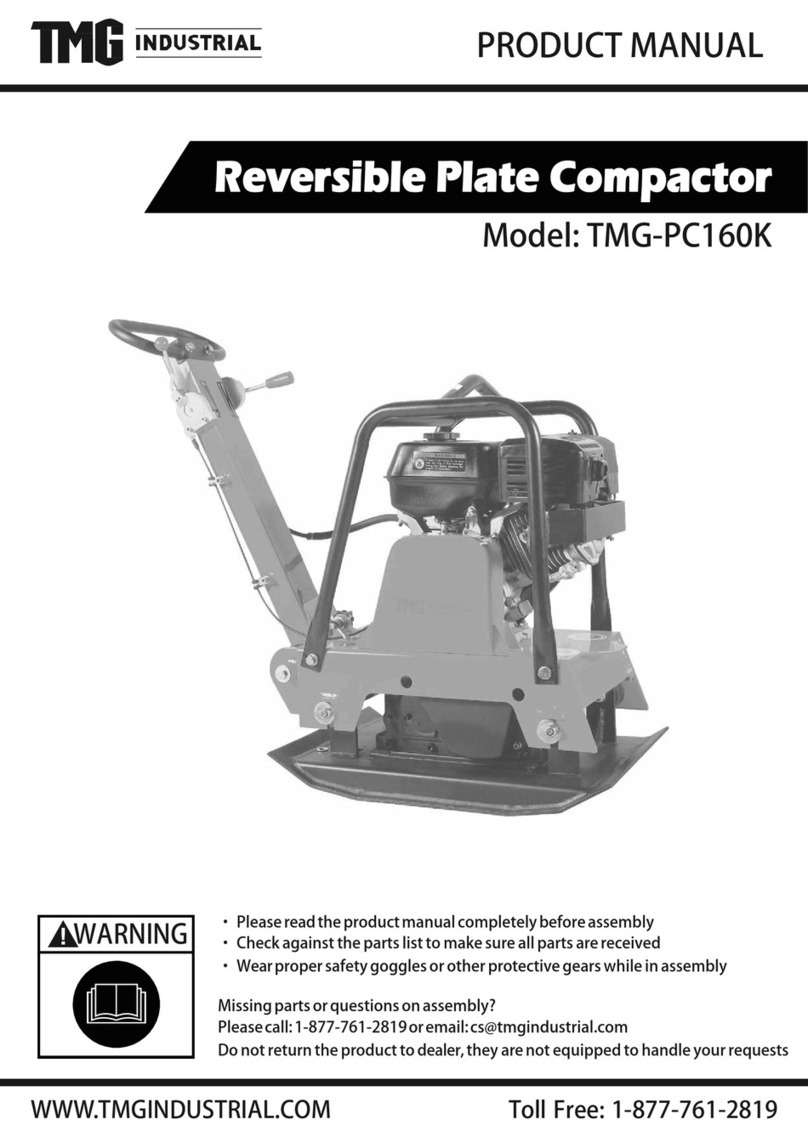
5. Compaction Tips
2
Table of Contents
1. Safety Information
1.1 Laws Pertaining to Spark Arresters
1.2 Operating Safety
1.3 Operator Safety while using Gasoline Engines
1.4 Service Safety
3. Operation
3.1 Recommended Fuel
3.2 Before Starting
3.3 To Start
3.4 To Stop
3.5 Application
3.6 Operation
4. Maintenance
4.1 Periodic Maintenance Schedule
4.2 Cleaning Plate
4.3 Drive Belt
4.4 Exciter Lubrication
4.5 Spark Plug
4.6 Engine Oil
4.7 Air Cleaner
4.8 Cleaning Sediment Cup
4.9 Carburetor Adjusment
4.10 Troubleshooting
4.11 Storage
4.12 Liing Machine
4.13 Transporting the Machine
2. Technical Data
2.1 Engine Data
2.2 Machine Data
3
4
4
5
5
7
7
7
8
9
8
9
10
10
10
11
11
12
13
14
14
15
16
16
17
17
6
6
7
---------------------------------------------------------------------
----------------------------------------------------------
-----------------------------------------------------------------------------
---------------------------------------------------------------------------------
------------------------------------------
-------------------------------------------------------------
------------------------------------------------------------------------
--------------------------------------------------------------------
-------------------------------------------------------------------------
-------------------------------------------------------------------------------
------------------------------------------------------------------------------
---------------------------------------------------------------------------------------
------------------------------------------------------------------------------------
---------------------------------------------------------------------------------------
------------------------------------------------------------------------------------
-------------------------------------------------------------------------------
--------------------------------------------------------------------------------------
-----------------------------------------------------------------------------------------
------------------------------------------------------------------------------------
--------------------------------------------------------------------------------------------
----------------------------------------------------------------------------------
------------------------------------------------------------------------------------------
-------------------------------------------------------------------------------------------
---------------------------------------------------------------------------------
----------------------------------------------------------------------------------------
----------------------------------------------------------------------------------------
--------------------------------------------------------------------------------------------
-----------------------------------------------------------------------------------
----------------------------------------------------------------------------
18





























